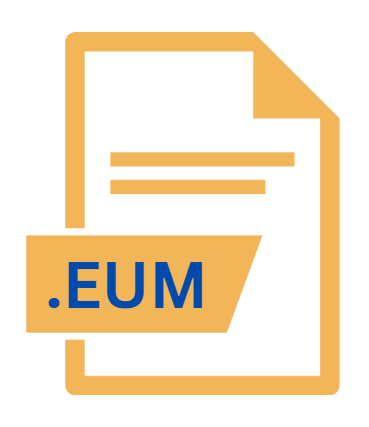.EUM File Extension

Enterprise User Monitor Configuration File
| Developer | Update Soon |
| Popularity | |
| Category | Settings Files |
| Format | .EUM |
| Cross Platform | Update Soon |
What is an EUM file?
The .EUM file extension is associated with Enterprise User Monitor (EUM) configuration files.
These files are integral to the configuration and management of EUM systems, which are used primarily in enterprise environments to monitor user activities, manage application performance, and ensure system reliability.
.EUM files contain settings and parameters that dictate how the EUM software operates and collects data.
More Information.
The history of the .EUM file extension is relatively recent, as it pertains to modern enterprise monitoring solutions that have evolved alongside advancements in IT infrastructure and software.
Initially, enterprises relied on basic monitoring tools and manual configuration processes. As organizations grew and IT systems became more complex, the need for more sophisticated monitoring solutions emerged.
The initial purpose of the .EUM file was to provide a standardized way of configuring and managing Enterprise User Monitoring tools.
These files enable administrators to define various parameters such as data collection intervals, monitoring thresholds, and alert settings.
By centralizing configuration settings in a file, organizations can streamline the management of their monitoring systems and ensure consistent performance across their IT infrastructure.
Origin Of This File.
The .EUM file extension originates from software solutions designed to monitor user activity and system performance within large organizations.
Enterprise User Monitoring (EUM) tools have been developed to help businesses track the usage patterns of their applications, optimize performance, and troubleshoot issues more effectively.
These configuration files are used to store and manage the settings required for these monitoring tools to function properly.
The precise origin of the .EUM file extension is closely tied to the development of enterprise-level monitoring solutions.
It is likely that these files were introduced as part of a suite of tools developed to enhance user experience and application performance monitoring in complex IT environments.
File Structure Technical Specification.
The .EUM file is a text-based configuration file that contains various settings and parameters in a structured format.
While the exact structure may vary depending on the specific EUM software being used, .EUM files generally follow a key-value pair format where each line represents a configuration setting.
A typical .EUM file might include:
- Header Information: Metadata about the file, such as version numbers and descriptions.
- Configuration Parameters: Key-value pairs defining settings such as data collection intervals, server addresses, and monitoring thresholds.
- Section Headers: Used to organize related settings into logical groups, making it easier for administrators to manage and update configurations.
The technical specification of .EUM files involves the use of standard text encoding (such as UTF-8) to ensure compatibility across different platforms and software versions. These files are often parsed and interpreted by the EUM software during startup or configuration updates.
How to Convert the File?
Converting a .EUM file to another format is generally unnecessary since it is a configuration file used exclusively by EUM software. If you need to migrate settings or integrate with other tools, you might consider the following approaches:
- Manual Conversion: Extract the settings from the .EUM file and manually input them into the new system’s configuration format. This approach is practical for simple cases but can be time-consuming for large or complex configurations.
- Scripted Conversion: Develop or use existing scripts to automate the conversion process. This approach requires knowledge of the file formats involved and may involve writing custom scripts to parse and translate configuration settings.
- Software Tools: Some EUM software solutions may offer built-in tools or utilities for exporting and importing configuration settings. Check the documentation or support resources for your specific EUM software to explore available options.
Advantages And Disadvantages.
Advantages:
- Centralized Configuration: .EUM files allow for centralized management of monitoring settings, making it easier to update and maintain configurations across multiple systems.
- Flexibility: Administrators can easily modify settings by editing the .EUM file, providing flexibility in managing monitoring parameters and responding to changes in system requirements.
- Standardization: Using a standardized configuration file format helps ensure compatibility and consistency across different monitoring tools and versions.
Disadvantages:
- Complexity: Managing .EUM files can be complex, especially in large organizations with numerous monitoring configurations. Incorrect settings can lead to issues with data collection or system performance.
- Error-Prone: Manual editing of .EUM files may introduce errors if not done carefully, potentially affecting the functionality of the monitoring system.
- Dependency on Software: The .EUM file is specific to certain EUM software solutions, meaning that changes in the software or its version may require updates to the configuration files.
How to Open EUM?
Open In Windows
- Text Editors: .EUM files can be opened and edited using standard text editors like Notepad, Notepad++, or Sublime Text. These editors allow you to view and modify the configuration settings as needed.
- EUM Software: The primary method for managing .EUM files is through the EUM software itself. These tools typically provide interfaces for loading, editing, and applying configuration settings from .EUM files.
Open In Linux
- Text Editors: Use text editors such as
nano,vim, orgeditto open and edit .EUM files. These editors provide similar functionality to their Windows counterparts. - EUM Software: On Linux systems, the EUM software that supports .EUM files can be used to manage these files directly, just as on Windows.
Open In MAC
- Text Editors: macOS users can use text editors like TextEdit, Sublime Text, or Visual Studio Code to open and modify .EUM files.
- EUM Software: If available, use the EUM software compatible with macOS to manage .EUM files and their settings.












